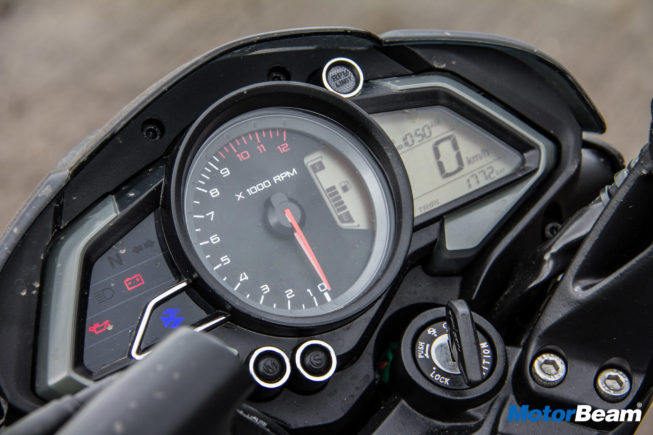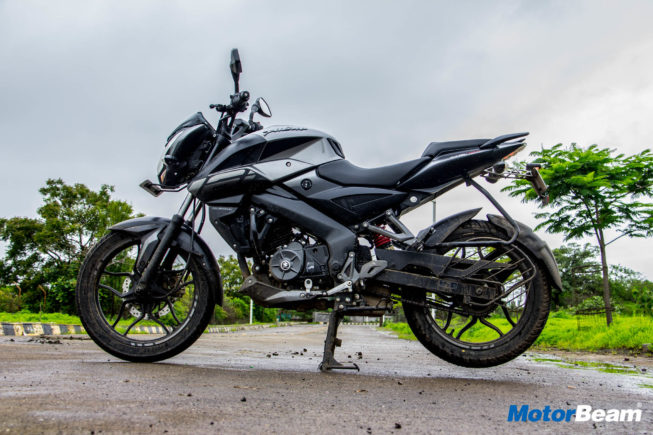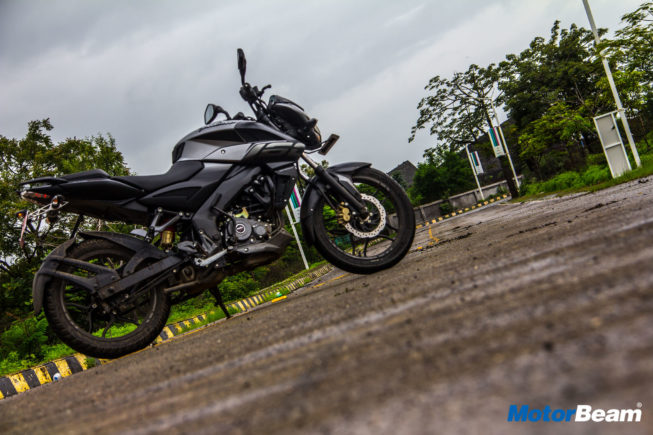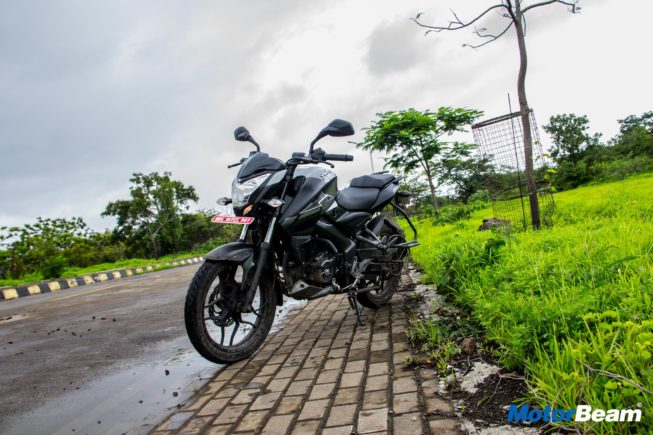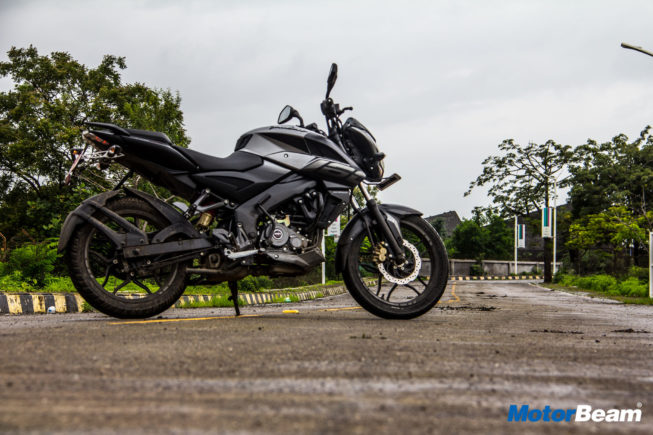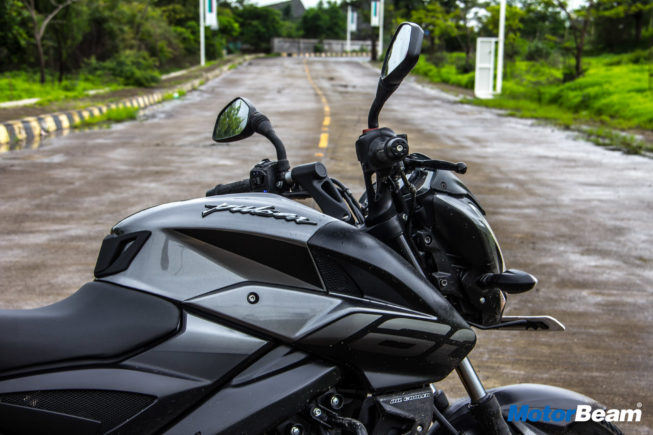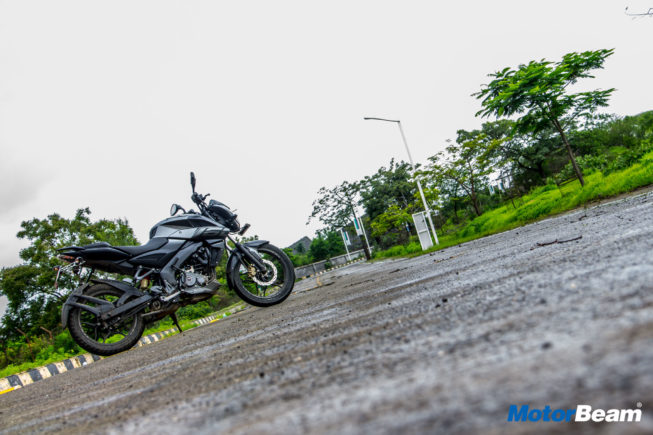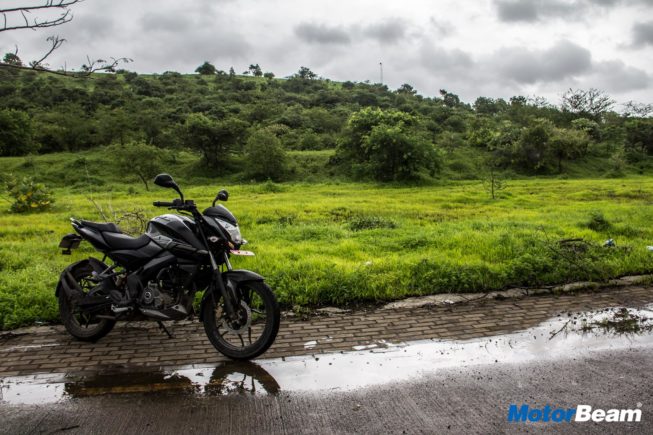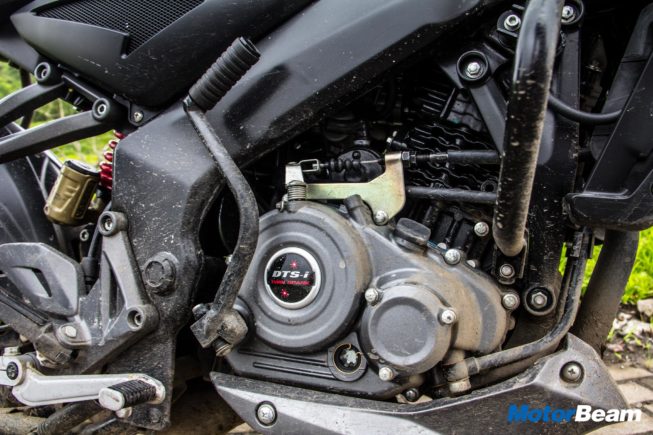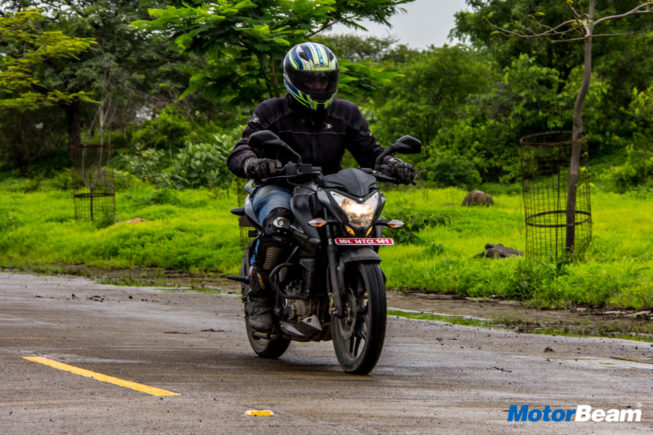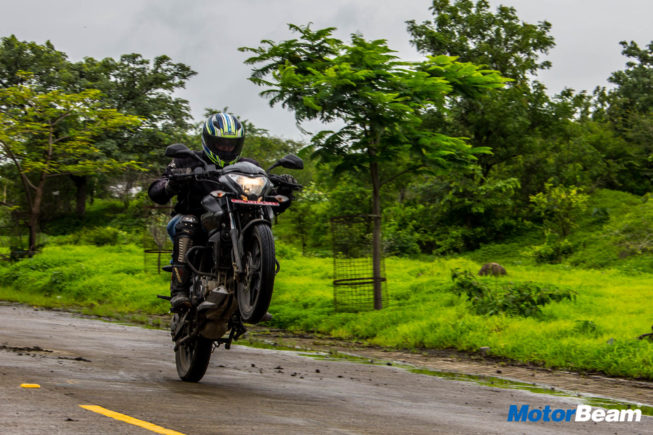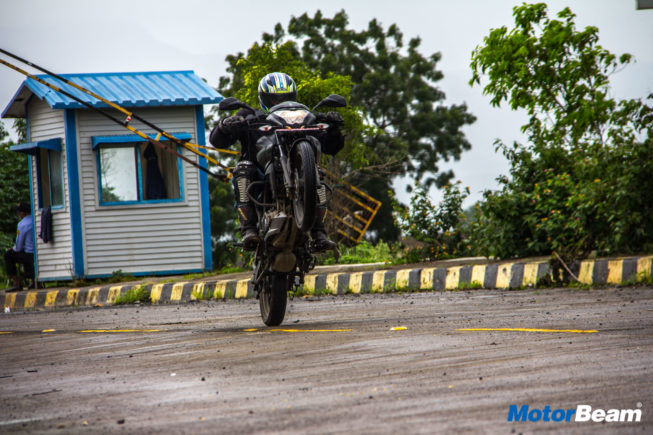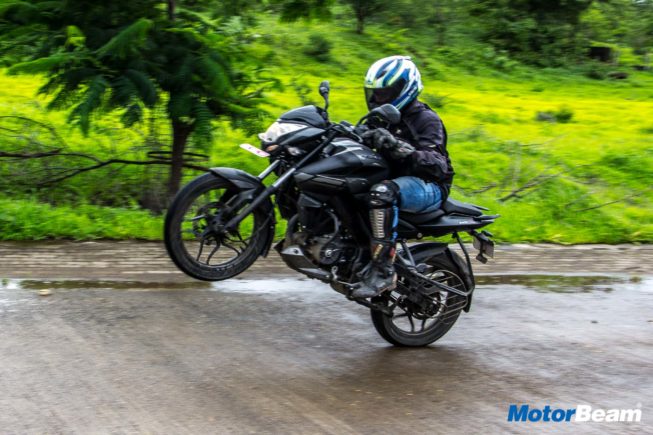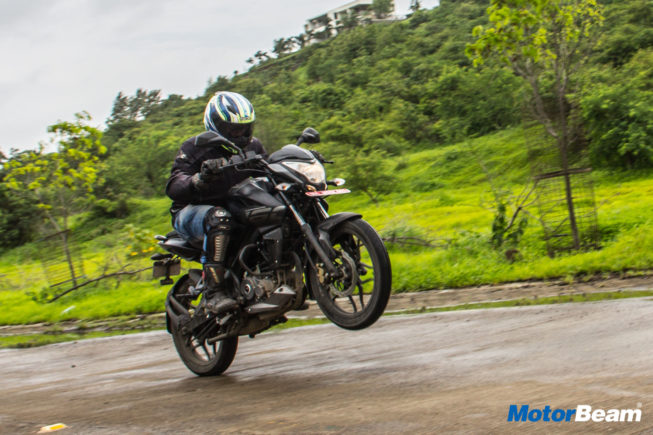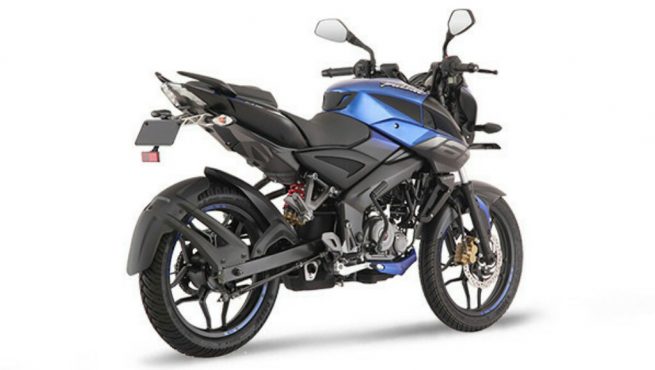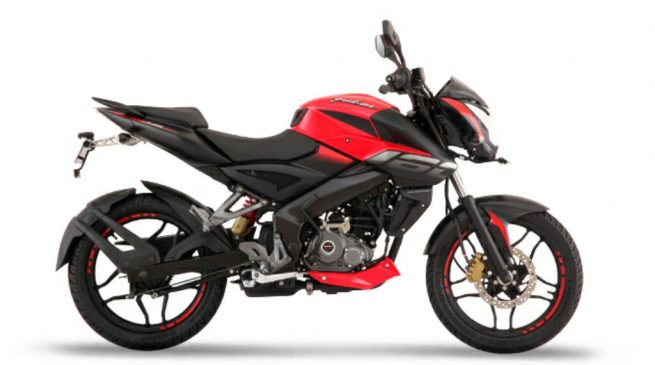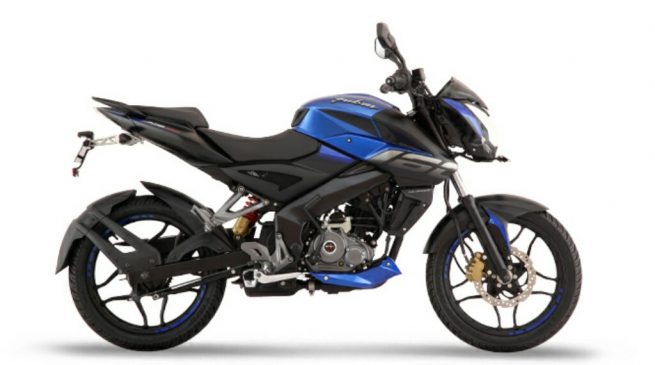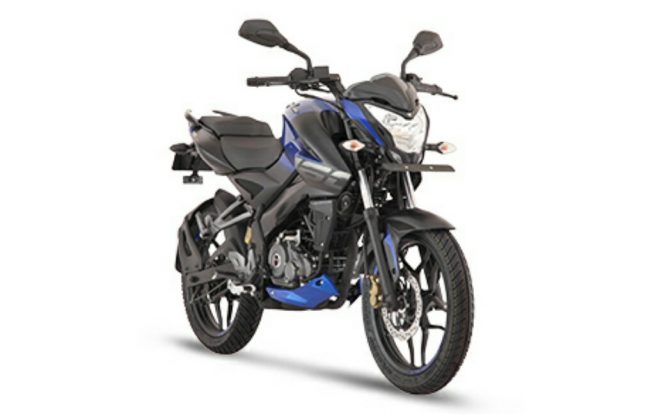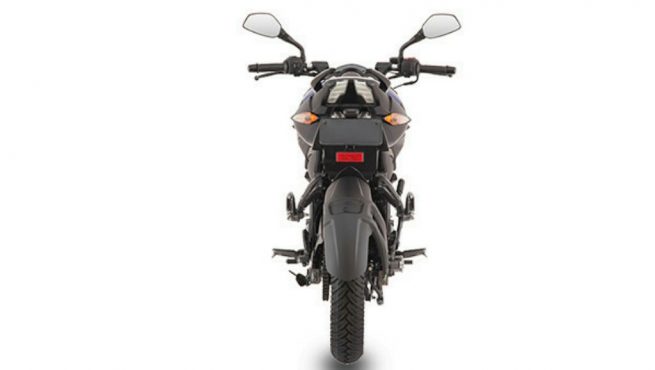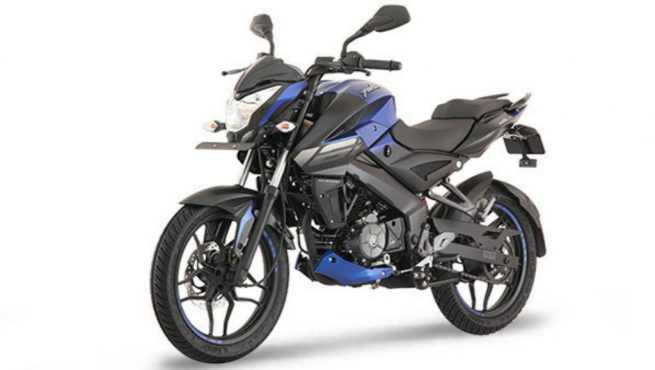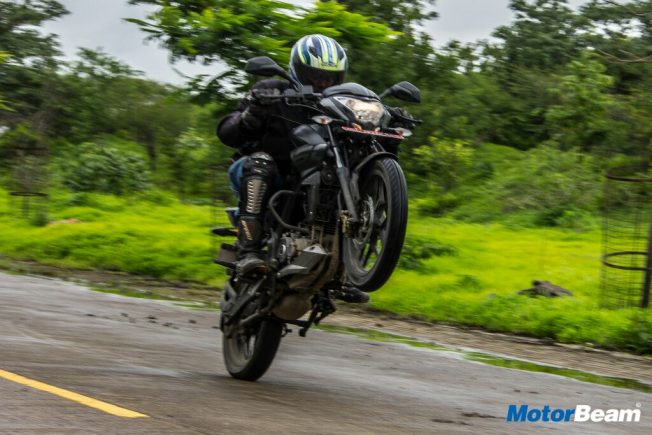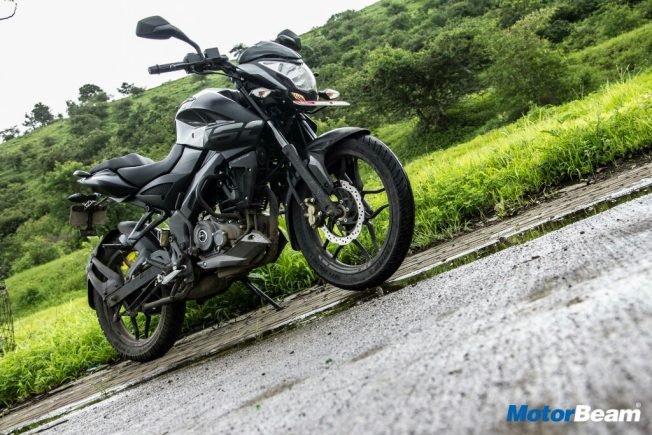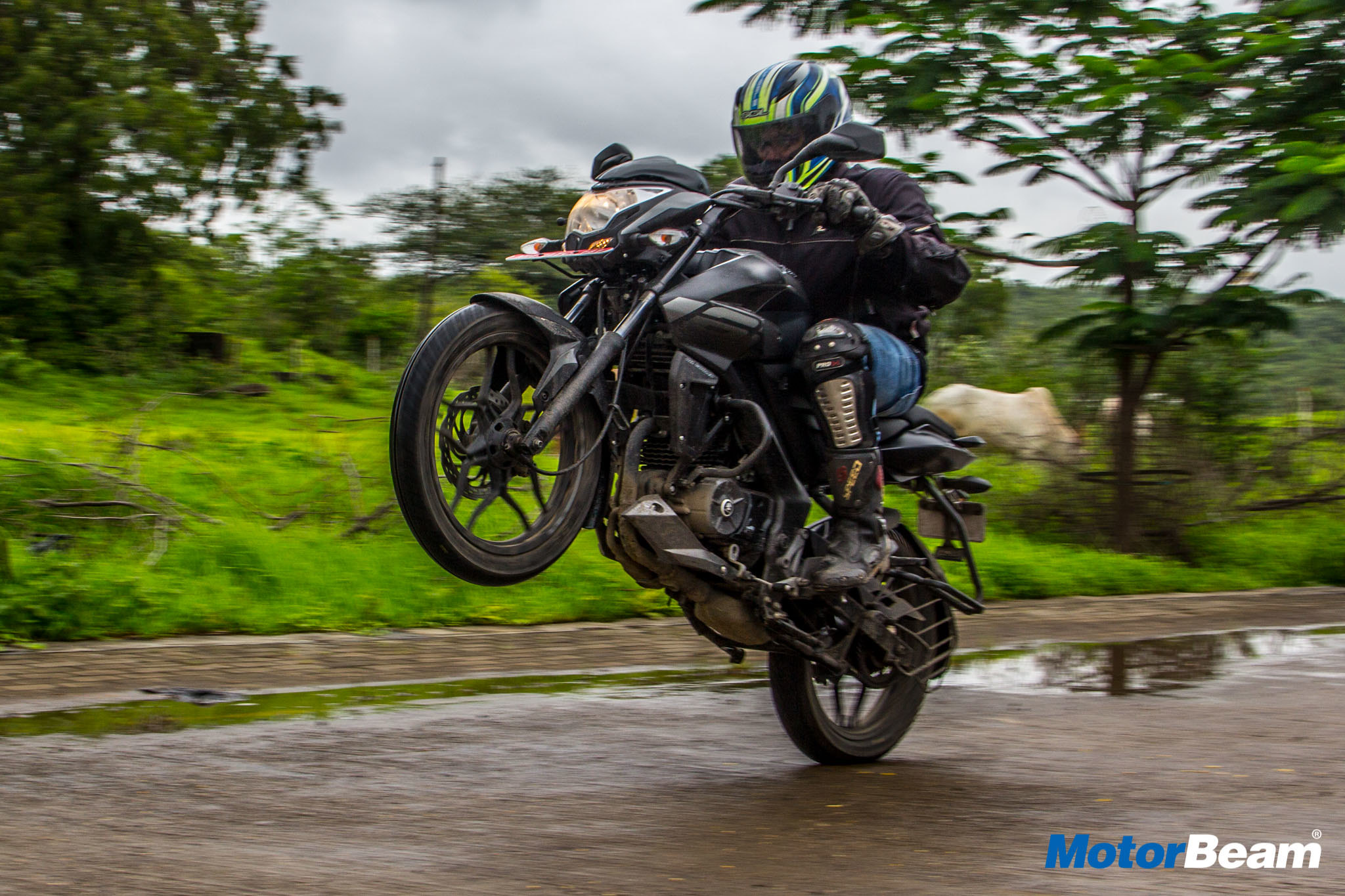
First launched in the year of 2017 to compete in the cut-throat commuter motorcycle market in India, the Bajaj Pulsar NS 160 has developed a personality of its own over the last three years. Building on the widespread recognition of its elder sibling, the Bajaj Pulsar NS 200, the Pulsar NS 160 quickly shot to fame and rightly so. This motorcycle proudly boasts class-defining power figures and a level of practicality that makes it hard for the other brands to keep up with.
The Pulsar NS 160 is one among the numerous motorcycle options available in the market today in the sub-200cc category. Bajaj itself contributes over six motorcycles in this segment. When competition from Japanese brands like Honda and Suzuki is considered, it’s easy for the Pulsar NS 160 to get lost in a long list of reliable motorcycle names. Is the Pulsar NS 160 just another clog in the wheel of the affordable commuter market in India? Is this motorcycle just a glorified replacement for the Pulsar AS 150? Or is the Pulsar NS 160 an icon on its own terms with a lot of soul on offer? Find out all about the above and much more in this detailed research analysis on the talented underdog, the Pulsar NS 160.
Pros: Class-Leading Performance Figures, Refined Motor, Affordable Service, Impressive Fuel-Efficiency
Cons: Single-Channel ABS, Small Section Tyres And Disc Brakes, Inadequate Front Suspension
Bajaj Pulsar NS 160 Design
The Pulsar NS 160 is identical to the Pulsar NS 200 for the most part, they both share the multi-reflector headlight unit that looks absolutely intimidating and sharp, the Pulsar NS 160 is also paired with the sleek-fit tank shrouds on either side of the metallic-finish fuel tank. This motorcycle, like the Pulsar NS 200, is an attractive sight from the front.
At the back, this motorcycle is adorned with matte-finish side panels below the riders seat and cool-looking black grab-rails are also fit on the rear, matte-finish back panel. Completing the rear section is the iconic vertically split, LED, tail-piece which is both practical and attractive. The matted-out lower section of the motorcycle like the engine area, front and rear alloys and fenders, and the perimeter frame chassis truly complements the colour options on offer making the Pulsar NS 160 quite a looker in the city.
Although in comparison to its elder sibling, the Pulsar NS 160 is relatively thinner in its lower area owing to the smaller tyres, smaller engine, and front suspension setup. But, the three eye-catching colour options offered by Bajaj more than makeup for this fact.
The Bajaj Pulsar NS 160 features a kick-start option that the Pulsar NS 200 misses out on
Bajaj Pulsar NS 160 Features
The Bajaj Pulsar NS 160 features the same semi-digital instrument cluster available on the Pulsar NS 200. The odometer and the speedometer are completely digital while the tachometer is of the analogue type. Both the motorcycles, however, miss out on the gear position indicator. The Pulsar NS 160 also shares its mirrors with its elder sibling, they provide a good line of sight and look stylish too. Handling the mechanical duties is a fuel-injected engine complete with a five-speed gearbox. The single-channel ABS on the front wheel is also a valuable feature to have.
Bajaj Pulsar NS 160 Engine Performance
For a motorcycle that’s targeted at the commuter market which aims to offer fuel efficiency and decent performance, the Pulsar NS 160 does all that and does it much better than most of its competition. Maybe, that’s what makes this motorcycle tick as much as it does with the customers? Powering this motorcycle is a 160.3cc, single-cylinder, oil-cooled, fuel-injected, five-speed gearbox engine producing 17.03 BHP at 9000 RPM and 14.6 Nm of torque at 7250 RPM.
The Pulsar NS 160 like any other Pulsar loves to be revved hard and fast while being ridden with a passion like no other. This motorcycle is comfortable in the lower and mid-range of the RPM meter. The addition of fuel injection has further improved the engine refinement and in this range is where, you, the rider feels most comfortable and relaxed. Above 8000 RPM, vibrations understandably creep in making the ride a bit taxing. The top speed is recorded at 114 km/h (VBOX tested) which is satisfactory.
Between the Pulsar NS 160 and the Pulsar NS 200, the latter features a triple-spark engine and a six-speed gearbox in place of the dual-spark engine and a five-speed gearbox on offer with the Pulsar NS 160. Both the engines are similar in nature and offer the same spirited riding experience that the Pulsar NS twins are famous for.
Bajaj Pulsar NS 160 Mileage (or Fuel Efficiency)
The Pulsar NS 160 offers highly satisfactory fuel-efficiency figures. In economical city riding conditions, one can expect 40 – 45 km/l. On the highway, you can expect anywhere between 45 – 48 km/l. With a fuel tank capacity of 12 litres, the Pulsar NS 160 can also perform on long tours with a riding range of about 510 km.
Bajaj Pulsar NS 160 Handling (or Dynamics)
The Bajaj Pulsar NS 160 handles similarly to the Pulsar NS 200, meaning it’s sharp, accurate, and handles passionate riding effortlessly. What makes this motorcycle handle like a charm? The telescopic front fork suspension accompanied by the ‘Nitrox’ mono shock absorber at the rear provides for an attentive setup that really responds well to the rider. The steel perimeter frame which the motorcycle sits upon distributes the kerb weight of 151 kg splendidly on both on-road and off-road situations.
On the corners, however, the Pulsar NS 160 fails to inspire the same confidence as its elder sibling. This motorcycle proudly shares most of the strengths of the Pulsar NS 200, but, shares a few limitations too. The clip-on handlebars could have been positioned higher up to amplify comfort, the lower part of the tank shrouds, again, rub up against the rider’s thigh. For the performance at disposal, both the motorcycles are in dire need of wider section front and rear tyres.
Bajaj Pulsar NS 160 Comfort (or Ergonomics)
The Pulsar NS series have always been comfortable motorcycles since they were first launched. The BS6 Pulsar NS 160 is no different. Both motorcycles offer similar levels of comfort since they share various quality-defining parts and mechanicals. The split-seat layout offers sufficient room for both its occupants and the material itself is on a bit of a stiffer side, both the seats could have been softer. The rider triangle is semi-dedicated meaning it’s not too demanding of the rider in terms of physical effort but also does not compromise on handling and comfort at the same time.
The seat height of 805 mm is on the higher side, meaning the majority of the population may have to tip-toe. But, the excellent confidence this motorcycle allows paired with the kerb weight of 151 kg should contribute to a fun riding experience. The Pulsar NS 160 bodes well with long-distance touring too, for both, the rider with the pillion. The precise placement of the foot-pegs for both the occupants’ results in an upright seating position and the grab-rails at the back do their job well too.
Bajaj Pulsar NS 160 Safety (or Brakes)
The Pulsar NS 160 comes equipped with a 260 mm front petal disc and a 230 mm rear petal disc. The petal disc is known to eliminate over-heating of the discs caused by intense braking and increase the life of both, the brake pads and the disc.
Further aiding the brakes on this motorcycle is the single-channel ABS on the front wheel and a speed sensor at the rear. However, the stopping power of this motorcycle is frankly underwhelming. Dual-channel ABS and wider section tyres would have gone a long way in improving the Pulsar NS 160 in this aspect.
Bajaj Pulsar NS 160 Service
Bajaj being a well-established motorcycle brand has stood the test of time and proved resilient in all its endeavours. They offer a wide range of authorised service centres and showrooms across the country where people can buy their motorcycles and get them promptly serviced, at an affordable cost. The average service interval for the Pulsar NS 160 is anywhere between 4000 to 6000 km, this particular two-wheeler should cost you somewhere between Rs. 800/- to Rs. 2000/- for its service.
Bajaj Pulsar NS 160 Price
Following is the price of the Pulsar NS 160 (on-road, Mumbai) –
- Bajaj Pulsar NS 160 BS6 – Rs. 1,35,475/-
Bajaj Pulsar NS 160 Resale Value
Bajaj is a brand that promises motorcycles that are easy to maintain, sturdy, and have a respectable build quality. The Pulsar NS 160 should have a fairly adequate resale value depending on the mileage on the odometer, accidents(if any), and overall maintenance.
Bajaj Pulsar NS 160 Colours
The Pulsar NS 160 is available in the following colours:
- Fossil Grey
- Saffire Blue
- Wild Red
While the Bajaj RS 200 and NS 200 have been cosmetically upgraded with new paint schemes, the NS 160 remains unchanged
Bajaj Pulsar NS 160 Specs
- Engine: 160.3cc, Oil-Cooled, 4-Stroke, Single-Cylinder
- Power: 17.03 BHP at 9000 RPM
- Torque: 14.6 Nm at 7500 RPM
- Transmission: 5-speed Manual
- 0-100 km/hr: 16.93 seconds (VBOX)
- Top Speed: 114 km/hr
- Fuel Consumption: 44-48 km/l
- Fuel Type: Petrol
- Chassis: Perimeter Frame
- Suspension: Telescopic Forks (Front) Nitrox Mono Shock Absorber (Rear)
- Tyres: 90/90/17 (Front), 120/80/17 (Rear)
- Brakes: 260 mm Disc (Front), 230 mm Disc (Rear)
Bajaj Pulsar NS 160 Dimensions
- Length x Width x Height: 2017 mm x 803.5 mm x 1060 mm
- Wheelbase: 1372 mm
- Ground Clearance: 177 mm
- Seat Height: 805 mm
- Fuel Tank Capacity: 12-litres
- Kerb Weight: 151 kg
Bajaj Pulsar NS 160 Rating
We give the Pulsar NS 160 a 4/5 rating. Bigger section tyres and the inclusion of dual-channel ABS will help this motorcycle secure a 5/5 rating from us.
Bajaj Pulsar NS 160 vs TVS Apache RTR 160 4V
The Chennai based motorcycle manufacturer, TVS Motor Company has been around in the market for quite some time now offering value-for-money motorcycles that pack a punch. The TVS Apache RTR 160 4V is one such motorcycle that’s practical, reliable, and pocket-friendly. This motorcycle, on paper, is eerily similar to the Pulsar NS 160. But, the TVS Apache RTR 160 is slightly lower in power figures and features a smoother engine with a slick-shifting five-speed gearbox.
Between the Pulsar NS 160 and the TVS Apache RTR 160, the Bajaj motorcycle is more aggressive, fast, and frantic while the latter is stable, rider-friendly in terms of comfort and also looks quite cool. The fuel-efficiency figures on both are identical at 40-48 km/l and the TVS Apache RTR 160 is lighter by just 2 kg. The pricing too is vaguely similar between the two sporty commuters with the TVS Apache RTR 160 being just close to Rs. 4000/- cheaper than the Bajaj offering. Choosing between the two, quite honestly, is not easy.
Bajaj Pulsar NS 160 vs Suzuki Gixxer
The Suzuki Gixxer is a formidable contender for the Pulsar NS 160 for a while now, the Suzuki Gixxer received a major update in 2019 before which, the previous variant ran unchanged for close to five years. The updated BS6 version sports a 155cc, single-cylinder, air-cooled, five-speed gearbox, fuel-injected engine that produces noticeably lesser power figures than the Pulsar NS 160.
The Suzuki Gixxer, however, is significantly lighter by almost 10 kg, which makes a world of difference in the world of motorcycles but is still slower than the heavier Pulsar NS 160 by a fair margin. The Suzuki motorcycle is also close to Rs. 15,000/- costlier than the Bajaj motorcycle prompting its customers to think long and hard before concluding on this motorcycle. The LED headlight setup may come as a reprise to uncertain buyers but the illumination it offers is not great either.
Final Verdict
Like all other Bajaj motorcycles, the Pulsar NS 160 is a bang-for-buck investment of your money. The outright performance and handling capabilities of this motorcycle make it extremely versatile in all circumstances, the affordable service and maintenance cost also comes as a huge plus point. The impressive fuel-efficiency figures go hand-in-hand with the high-revving nature of this engine. The sweet sound of the exhaust note paired with the sharp design of the Pulsar NS 160 demands a keen presence on the road.
Wider section front and rear tyres along with dual-channel ABS would have sealed the deal for us but we honestly cannot complain. The Pulsar NS 160 is a value-for-money motorcycle at its best. It always was and still is. We hope this article has helped provide some clarity and hopefully aided you before your big purchase. Thank you for reading and ride safely. Cheers!


